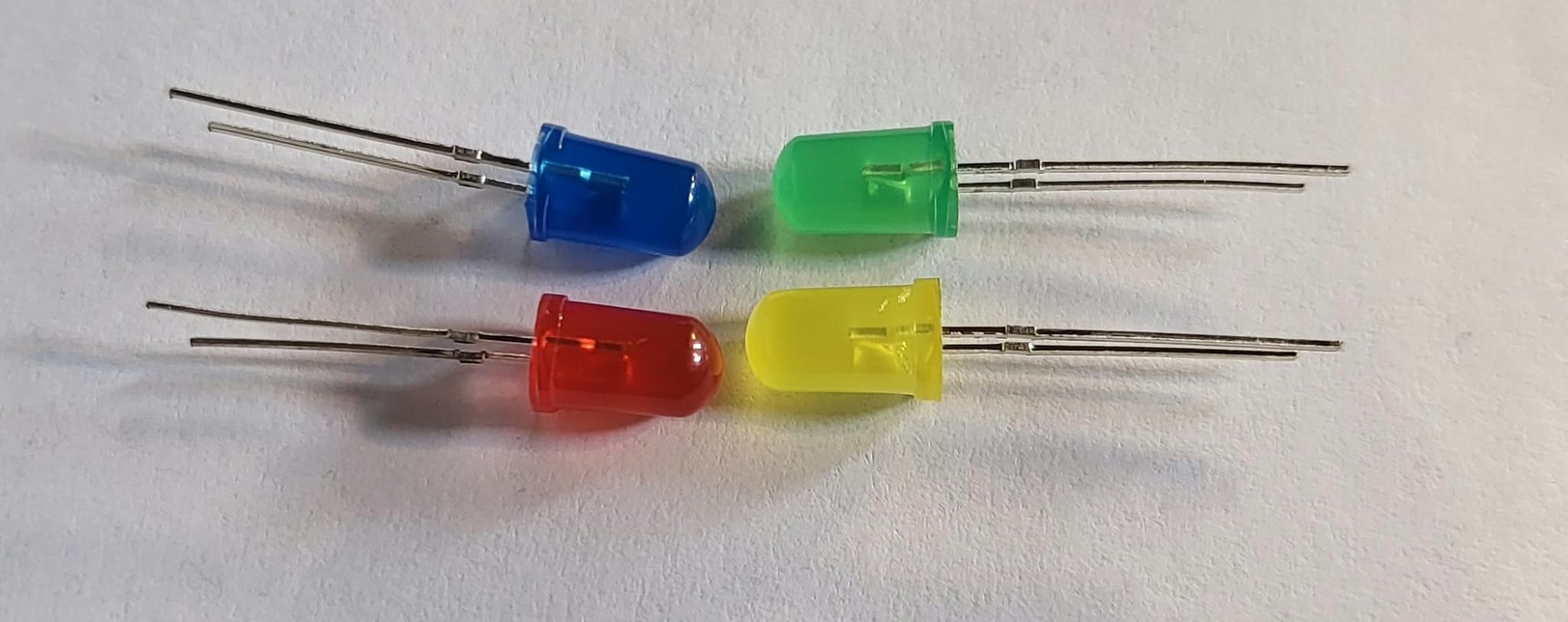Calculate LED series resistor
-
24. May 2025
If you want to use an LED in your circuit, there is one question you will hardly be able to avoid:
Which series resistor do I need to ensure that my LED lights up safely and reliably?
In this article, I'll explain it to you very simply:
why a series resistor is necessary at all,
how you can calculate it yourself (incl. formula),
which are typical values (table),
and how you can get started right away with my interactive tool.
Why does an LED need a series resistor at all?
An LED (light-emitting diode) is not a normal load. It allows current to flow above a certain voltage - but without a built-in current limiter.
This means that:
- If you connect an LED directly to a voltage source, too much current will flow and it will be destroyed.
- The solution: A series resistor that limits the current.
Formula for calculating the series resistance
You can simply calculate the required resistance with :
Formula:
R = (USupply – ULED) / ILED
Explanation of the values:
USupply: e.g. 5 V or 12 V
ULED: typical forward voltage of the LED (e.g. 2 V)
ILED: desired LED current, e.g. 20 mA = 0.02 A
Sample calculation:
You want to operate a red LED (approx. 2.2 V) at 5 V, with 20 mA current.
Example:
You want a red LED with 2.2 V forward voltage powered by 5 V – with 20 mA current
R = (5 V − 2,2 V) / 0,02 A = 2,8 V / 0,02 A = 140 Ω
Da 140 Ω is not a standard value in the E12 series, take the next larger one: 150 Ω.
This keeps the LED slightly below its maximum load - good for service life and power consumption.
Table: Typical LED voltages and current consumption
| LED color | Forward voltage (V) | Typical current (mA) |
|---|---|---|
| Red | 1,8 – 2,2 | 10 – 20 |
| Yellow | 1,9 – 2,2 | 10 – 20 |
| Green | 2,0 – 3,2 | 10 – 20 |
| Blue | 2,8 – 3,4 | 10 – 20 |
| White | 3,0 – 3,4 | 10 – 20 |
Calculate series resistance automatically - with my tool
Don't want to do the math by hand every time? Then simply use my interactive tool:
Enter the supply voltage, LED voltage and desired current - and you get it immediately:
the calculated value
a suitable standard value from the E12 series
Conclusion: series resistors are mandatory - but easily calculated
Even if it sounds trivial: the right series resistor protects your LEDs from death by overcurrent - and ensures that they work with the desired brightness.
With the formula and tool from this article, you can now correctly dimension every LED - without any guesswork.

